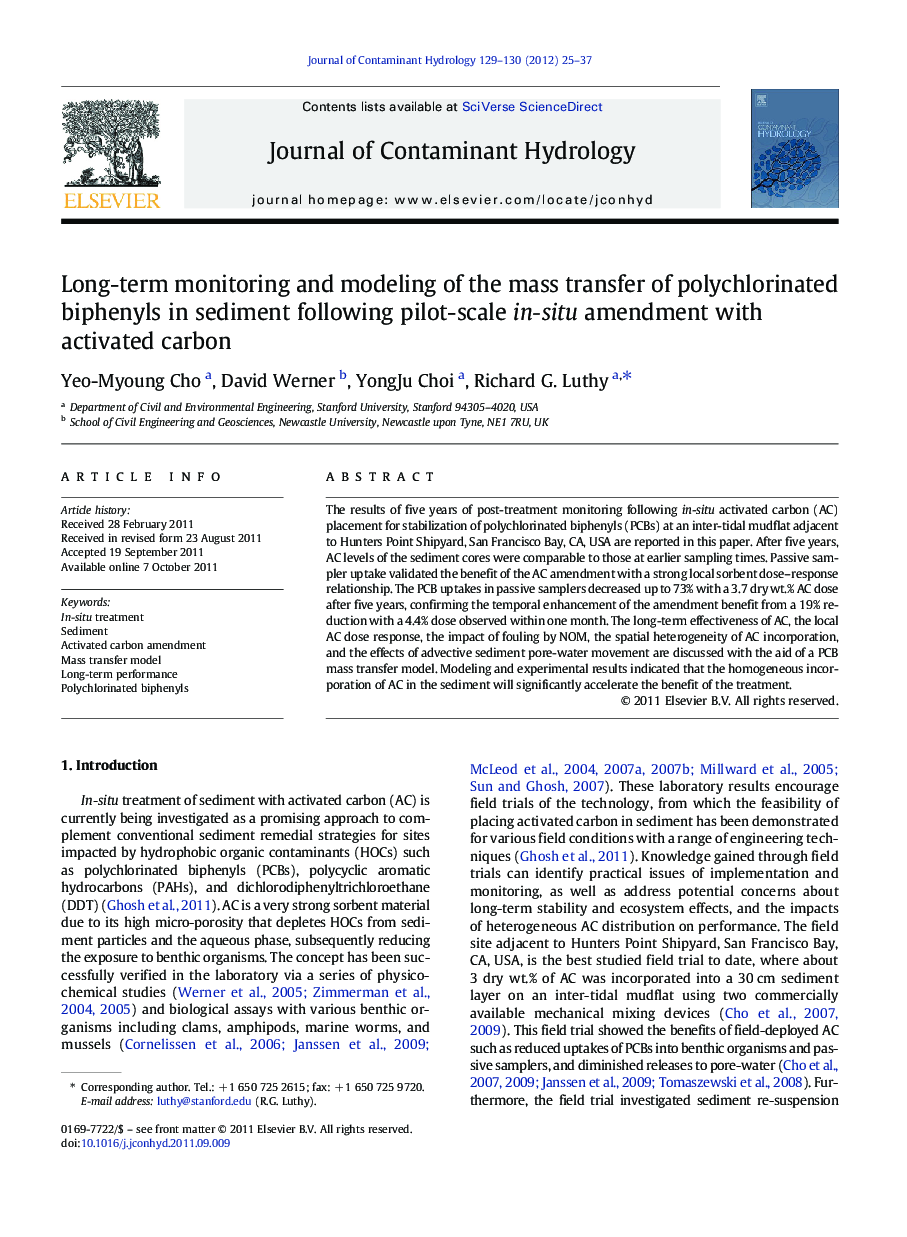| کد مقاله | کد نشریه | سال انتشار | مقاله انگلیسی | نسخه تمام متن |
|---|---|---|---|---|
| 4546871 | 1627071 | 2012 | 13 صفحه PDF | دانلود رایگان |

The results of five years of post-treatment monitoring following in-situ activated carbon (AC) placement for stabilization of polychlorinated biphenyls (PCBs) at an inter-tidal mudflat adjacent to Hunters Point Shipyard, San Francisco Bay, CA, USA are reported in this paper. After five years, AC levels of the sediment cores were comparable to those at earlier sampling times. Passive sampler uptake validated the benefit of the AC amendment with a strong local sorbent dose–response relationship. The PCB uptakes in passive samplers decreased up to 73% with a 3.7 dry wt.% AC dose after five years, confirming the temporal enhancement of the amendment benefit from a 19% reduction with a 4.4% dose observed within one month. The long-term effectiveness of AC, the local AC dose response, the impact of fouling by NOM, the spatial heterogeneity of AC incorporation, and the effects of advective sediment pore-water movement are discussed with the aid of a PCB mass transfer model. Modeling and experimental results indicated that the homogeneous incorporation of AC in the sediment will significantly accelerate the benefit of the treatment.
► In-situ sediment remediation using activated carbon remained effective after 5 years.
► The amount of AC remaining in the sediment was comparable to the amount placed originally.
► The spatial distribution of the embedded AC was heterogeneous.
► The treatment effectiveness was affected by the local AC-dose and fouling.
► Establishing PCB sorption equilibrium in the field may take more than 5 years.
Journal: Journal of Contaminant Hydrology - Volumes 129–130, 15 March 2012, Pages 25–37